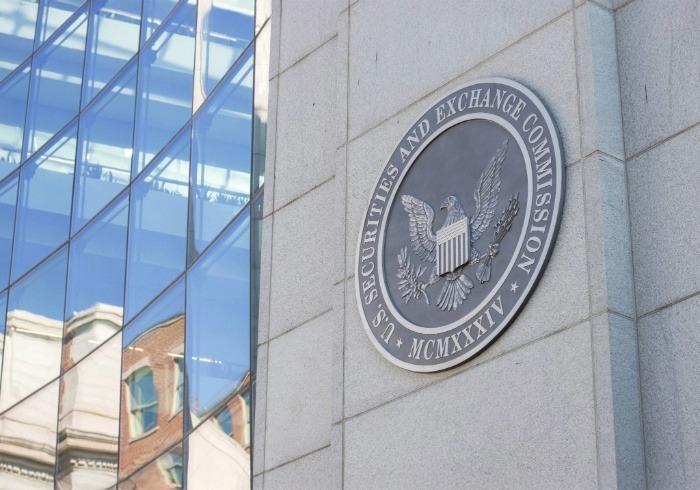- EU body mulling trade finance support for commercial banks, political risk insurance
- Strategy welcomed by export credit agencies
The European Investment Bank (EIB) has unveiled plans to expand its role in trade and export finance, in a bid to boost trade with high-risk countries and help Europe compete with China.
The EIB said earlier this month that it will present plans to its board for a pan-European Trade and Investment Initiative, launch a “global trade finance platform” and explore the use of “political risk insurance instruments”.
The multilateral lender aims to play a bigger role in helping Europe compete in global markets and has grown its capital allocation to €10bn per year, which it said will mobilise up to €105bn in new investment over the next two years.
Part of that support will go to helping European exporters vying with rivals from countries such as China for contracts to build overseas projects like railways, hospitals, and airports.
The EIB already co-operates with some export credit agencies (ECAs) and banks through initiatives designed to boost investment in EU companies. But it has not previously played a major role in export finance, with that role being left largely to member state ECAs.
The EIB said in an October 15 document laying out its “global strategic orientation” that it plans to work with ECAs and commercial banks to “facilitate” bid and performance guarantees – instruments that are central to big-ticket contracts in sectors such as defence and infrastructure.
The first pilot projects are expected to be launched next year, an EIB spokesperson told GTR.
Through the trade finance platform, the EIB will “work directly with commercial banks to expand trade finance support for high-priority outside-EU countries and regions, with a particular focus on value chains and markets of importance to the EU”, it said in the document. Its support will also prioritise euro-denominated trade.
The spokesperson declined to provide further details of the mooted trade finance platform or political risk initiative because they are still being designed.
The planned Trade and Investment Initiative would build on a pilot programme allowing national ECAs to get reinsurance from the EIB covering up to 80% of exposures linked to Ukraine.
Many ECAs “are currently held back by the exposure limits vis-a-vis large European and international banks that dominate export and project finance support for EU companies, as well as by their own risk appetite and concentration limits in non-EU locations”, the EIB said in the document.
“With the benefit of the EU mandates, as well as its unique institutional role, the EIB has the capacity to help export credit agencies overcome these constraints to support projects and trade flows well aligned with EU priorities”, it said.
Opening up cover
Several ECAs welcomed the EIB’s desire to expand their capacity to support exports outside the EU.
“We welcome the EIB’s initiative to strengthen European export and investment support and look forward to exploring possible synergies once more details are available,” said a spokesperson for Eximbanka Slovakia, which is taking part in the Ukraine pilot.
Austria’s OeKB said “additional risk-sharing opportunities on a European level are of course welcome and will strengthen the central role of the national ECAs”.
A spokesperson added it was important that “the additional risk capacity can be integrated easily into the ECA’s toolbox and utilised in a fast and efficient manner”.
No transactions have yet been executed under the Ukraine pilot, which was first mooted in 2024.
But EIFO, the Danish ECA which helped launched the scheme, said it was pleased with how easily individual transactions can be brought under the pilot, with borrowers only required to fill out a few pieces of extra paperwork.
The European Investment Fund, which is administering the pilot, relies on underwriting carried out by the ECAs rather than conducting its own. It will cover 80% of individual transactions and pay out losses as long as it deems the deal to have met the criteria for cover.
“That gives us a larger appetite in terms of risk, but it also expands our own funds,” said Michael Holm, senior business developer at EIFO.
If the EIB goes ahead with a facility based on the pilot, it may unlock exports to countries with the highest risk ratings, where most ECAs and commercial providers have little to no appetite to insure.
Holm said his experience with the European Investment Fund has shown “they will always try to go for the most risky parts”.
“They would like to cover where you don’t dare to go, so to speak… they don’t want to cover the best [risks], because they know you’re going to go to the market and do your stuff there anyway.”
Holm’s colleague Peder Larsen, associate director for EIFO’s Ukraine fund, nominated Argentina – a large market but unappetising bet for most commercial banks – as a country that could be covered by the eventual EIB scheme.
“If it works in Ukraine, why shouldn’t it work in Africa and South America?”, he pointed out.
Pekka Karkovirta, vice-president for international relations at Finnvera, Finland’s ECA, said the Ukraine pilot “could pave the way for any other countries that would be difficult or off cover for Finnvera”.
Such a programme should be based on trade priorities of both the European Commission and Finland, he added.
Competing with China
A 2023 feasibility study that shaped the EIB’s approach to export finance identified a “wide range of market gaps” that crimped exporters’ access to competitive financing and insurance instruments, hampering their ability to compete internationally.
The OECD Arrangement – a “gentlemen’s agreement” between wealthy nations – governs conditions including maximum tenors and minimum pricing to create a level playing field in export finance. But large volumes of export finance are provided by countries that are not members, such as China and India.
China reclaimed top spot in the ECA league tables last year, according to US data, with a medium-to-long term cover volume of US$23.5bn. Three European ECAs – Germany, Italy, and France – took the next three spots, however.
“The export credit strategy originated from the concerns that about all kind of competition issues that are being faced by European companies, banks, exporters and investors,” said Paul Mudde, a consultant and co-author of the study.
The study also identified a growing trend of countries such as South Korea, the UK and the US, adopting a “whole-of-government” approach to export finance – a difficult strategy to compete against for a bloc made up of 28 governments.
One of the challenges facing the EIB’s push into export finance would be ensuring that its support expands capacity rather than simply replacing cover that would have easily been provided by ECAs or commercial entities, Mudde said.
He also suggested that the EIB consider expanding cover to commercial trade credit insurers such as Allianz Trade, Atradius and Coface, that dominate insurance for short-term risks.
“They likely face similar risk capacity constraints in relatively high-risk markets” as ECAs do for longer-term cover, he said.







